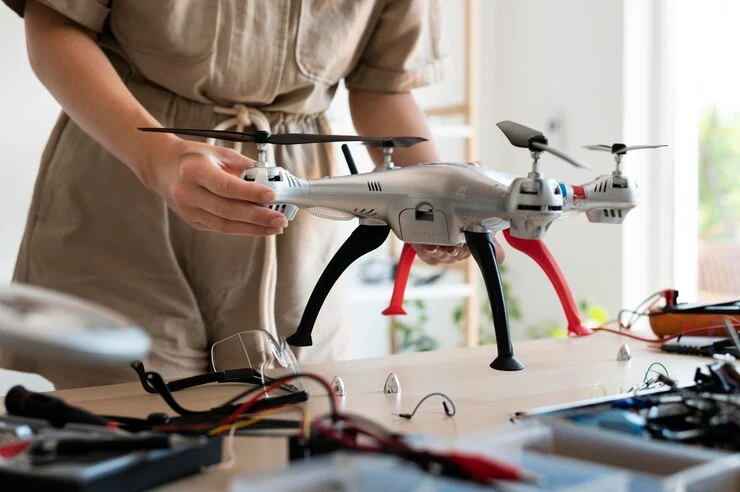The drone industry has witnessed an incredible surge in innovation over the past few years. With advancements in design technologies, drones are becoming more efficient, versatile, and user-friendly. This article delves into the latest design technologies in drones, exploring how they are transforming various industries and everyday life.
Understanding Drone Design Technologies
Drone design technologies encompass a variety of disciplines, including aerodynamics, material science, software development, and robotics. These technologies ensure drones are not only functional but also capable of performing specific tasks effectively.
Aerodynamic Innovations in Drone Design
Aerodynamics plays a crucial role in drone design. Streamlined shapes reduce drag, allowing drones to fly longer distances while conserving energy. Engineers utilize computational fluid dynamics (CFD) simulations to test various designs before production. These simulations provide insights into how air interacts with the drone’s surfaces, leading to better performance in flight.
Materials Engineering: Lightweight and Durable
The choice of materials significantly impacts a drone’s performance. Advanced materials like carbon fiber and composite materials are increasingly used in drone construction. These materials are both lightweight and strong, enabling drones to carry more payload while maintaining stability. The shift towards lighter materials allows for longer flight times and enhanced fuel efficiency.
Battery Technology: Powering the Future of Drones
Battery technology is a critical aspect of drone design. Lithium-polymer (LiPo) batteries have become the standard due to their high energy density and lightweight characteristics. Recent advancements in solid-state batteries promise even longer flight times and faster charging. This innovation increases operational efficiency.
Autonomous flight systems are revolutionizing drone operations. These systems use a combination of GPS, computer vision, and machine learning to enable drones to navigate complex environments without human intervention. This technology is particularly beneficial in industries like agriculture, where drones can autonomously monitor crops and assess health, thus enhancing productivity.
Enhanced Communication Systems

Drones rely on robust communication systems to transmit data and receive commands. Innovations in 5G technology are paving the way for real-time communication between drones and control stations. This advancement allows for enhanced control and data collection, particularly in urban environments where traditional communication methods may falter.
Sensors and Imaging Technologies
The incorporation of advanced sensors and imaging technologies has expanded the capabilities of drones significantly. LiDAR, infrared cameras, and high-resolution imaging systems allow drones to perform detailed inspections and data collection tasks in various sectors, including construction, mining, and environmental monitoring.
Design for Compliance and Safety
As drone usage expands, so does the need for safety and regulatory compliance. Design technologies now focus on incorporating safety features such as fail-safe mechanisms, collision avoidance systems, and geo-fencing to ensure that drones operate safely within designated airspaces. These features are crucial for gaining regulatory approval and public acceptance.
The Role of Software in Drone Design
Software plays a vital role in the design and operation of drones. Advanced flight control systems enable precise handling and stability during flight. Additionally, software platforms facilitate data analysis and decision-making, allowing businesses to harness the full potential of the data collected by drones.
Future Trends in Drone Design Technologies
The future of drone design technologies is bright, with several trends emerging. Swarm technology, which involves the coordinated operation of multiple drones, is gaining traction in applications like search and rescue missions. Moreover, the integration of artificial intelligence (AI) in drone systems is set to enhance their operational capabilities and efficiency further.
Conclusion
The landscape of drone design technologies is rapidly evolving, driven by innovations that enhance performance, efficiency, and safety. From advanced materials to autonomous systems and improved communication technologies, these developments are set to revolutionize industries worldwide. As we look to the future, the potential of drones continues to expand, promising exciting possibilities for both commercial and recreational use. By embracing these advancements, we can unlock new horizons in aerial technology, making our lives easier and more efficient.
